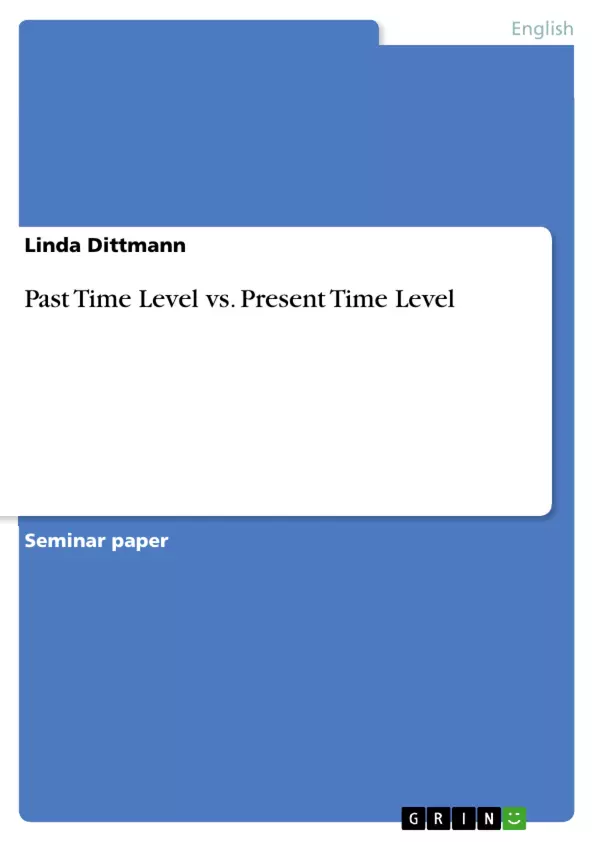In this paper I am going to write about the present time level (present tense, pre-present tense, future tense, and pre-future tense) – the tenses of involvement and nearness. Therefore, I will have a closer look at the form and usage of the particular tenses. In order to do so I have used the following grammar books: Praktische Englische Grammatik, English G: Grammatik, Englische Grammatik: Regeln und Übungen für die Klassen 5 bis 13, A University Course in English Grammar, Tense, and Englische Verbformen: Bedeutung und kommunikative Leistung.
At the end I am going to go through three different texts in order to find examples of the use of present tense, pre-present tense, future tense, and pre-future tense. One text is about language and literature: Language and Empowerment by Ronald Carter out of Keywords in Language and Literacy , the second text is a cultural text by David Punter and is called Fictional maps of Britian (Theoretical frames) out of Studying British Cultures – An Introduction, and the last text is an historical one out of An Outline of American History by Keith Olson.
Table of Contents
- Introduction
- Present time level
- Present Tense
- Pre-Present Tense
- Future Tense
- Pre-Future Tense
- Text study
- Results
- References
- Appendix
Objectives and Key Themes
This paper examines the present time level in English grammar, specifically focusing on the present tense, pre-present tense, future tense, and pre-future tense. The author aims to analyze the form and usage of these tenses and explore how they relate to concepts of nearness and distance in both social and psychological contexts. The analysis will be supported by examples from three different texts: a text on language and literature, a cultural text, and an historical text.
- The concept of nearness and distance in relation to tense usage
- The social and psychological implications of tense choice
- The grammatical formation and usage of the present tense, pre-present tense, future tense, and pre-future tense
- An exploration of tense usage in different types of texts
Chapter Summaries
The introduction outlines the focus of the paper, which is to explore the present time level in English grammar. The author will examine the form and usage of the present tense, pre-present tense, future tense, and pre-future tense, drawing on examples from three different texts: a text on language and literature, a cultural text, and an historical text. The introduction also outlines the grammar books used for reference in the paper.
The second chapter delves into the concept of present time level, discussing how present tense represents nearness and past tense expresses distance. The chapter explores how tense choice can be influenced by social, psychological, and hypothetical factors, providing examples to illustrate these distinctions.
The third chapter will focus on the grammatical formation and usage of the present tense. The author will discuss the rules of present tense formation, including the use of "-(e)s" and "do" and "does" for negative sentences and questions.
Keywords
Key terms and concepts in this paper include: present time level, present tense, pre-present tense, future tense, pre-future tense, nearness, distance, social distance, psychological distance, hypothetical distance, tense usage, grammatical formation, text analysis, language and literature, culture, history.
- Citation du texte
- Linda Dittmann (Auteur), 2003, Past Time Level vs. Present Time Level, Munich, GRIN Verlag, https://www.grin.com/document/41373



